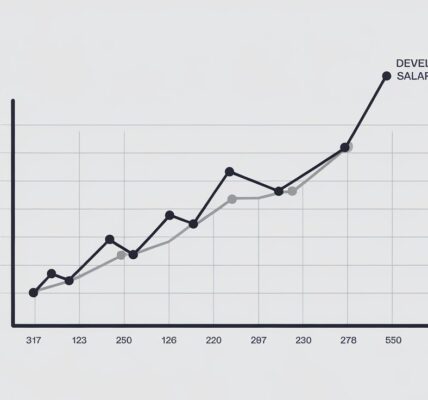The utilities industry is in the middle of an evolution driven by sustainability, reliability, and efficiency in energy utilization across the world. Fundamentally, this shift can be deemed to be owing to the idea of utilities business intelligence – the use of data, analytics, artificial intelligence and other technologies to improve utility decision making. These strategic applications are assisting utility companies to optimize their resource consumption, increase customer satisfaction, and envision problems in advance.
Identifying Utilities Business Intelligence
BI can be described as the process of gathering information, analyzing as well as presenting data for decision making in organizations. In the specific context of utilities, business intelligence involves collecting data from numerous sources including meters, cable and wire networks, clients or consumers, and weather to mention but a few. Such ideas may enable utility management to move up the learning curve, operational efficiencies, lower costs, and hence, service delivery.
Features of Utilities Business Intelligence
Utilities business intelligence integrates several key components, including:
- Data Collection: Collecting data from the smart meters, sensors and devices deployed across the whole grid in real time.
- Data Analytics: Employing computer proficiency, data mining, analysis for past or current information with the help of predictive models.
- Visualization Tools: Excel-based ERP reports that facilitate simple visualization of the most relevant and valuable data to decision-makers.
- Automation: Optimizing the business utilization of demand forecasting, grid maintenance, and outage detection functions as key processes in an organization system.
The Role of Business Intelligence in Utility Companies
Business intelligence has thus turned out be be a critical factor that utility firms use with the aim of improving on the performance and the customer value. As a result of data intensity, it’s possible for utilities to manage and analyze big data that would enable them to detect areas of inefficiency within their business and operations, potentially reaping bottom line savings and make strategic decisions.
Increasing the Operational Performance
A key objective therefore towards the implementation of utilities business intelligence is to make improvements on the flow of activities within utility organizations. With the help of the data received from the grid in real time, the utilities can identify when and where inefficiencies exist, these could include energy losses, equipment failure, or unusually high usage. This allows them to address issues before they escalate into costly problems.
For instance, some BI tools can check the load levels of the transformer and then determine that the transformer is likely to fail and then organise for its repair before it damages many things in the process. Likewise, there are data analytics of energy so as to balance amount produced and used at a particular time to avoid cases of wastage.
Improving Customer Service
Due to the advancements in technology today’s customer demands more attention from their utility companies in terms of services. Utilities business intelligence entails means through which firms can be in a position to learn about consumption habits and customer feedback to reciprocate through their billing history.
Depending on such data, utility companies can provide clients with personalized services, including flexible billing or energy-saving recommendations and specific rate plans. In addition, BI tools can also anticipate how high energy usage customers might be and alert the utility ahead of time before a steep bill arises.
Incorporating Renewable energy sources
This restructuring of utility companies became a challenge as availability of renewable energy including solar and wind started forming part of the energy mix. Analytics support the utilities business in predicting future renewable energy generation, operations of the grid, and stability of the grids.
Practical Applications of Utilities Business Intelligence
Utilities business intelligence can support different fields of the utilities industry, from distribution grids to client relations. Here are some key practical applications:
-
Smart Grid Management
Smart grids have taken over the traditional ways that utility companies were used to handling electricity distribution. Modern smart grids use sensor and meter data in real-time to manage the flow of electricity, to identify problem areas, and to control distribution.
Business intelligence solutions help utility companies to have visibility of the performance of the grid and detect potentially bad scenarios, take the required actions in order not to cause power outages. From smart meters data, BI tools can even forecast the future energy demand enabling utilities to avoid undesirable overload at peak periods.
-
Predictive Maintenance
Concisely, utility companies formerly carried out maintenance reactively, on a time-based schedule or when equipment failed. However, this approach can work out to be rather costly and not very efficient. Maintenance business intelligence helps to predict equipment failures since it compares data from the equipment with previous statistics collected from similar equipment.
-
Energy Demand Forecasting
When demand is predicted well, the utility companies can efficiently generate energy, save money and meet customer needs. Also, demand forecasting assists utilities to know times of high demand so that they can begin encouraging customer to reduce usage during such a time through a program called demand response.
-
Improvement of Energy Efficiency Programs
It is not uncommon to find that the utility companies come up with exercises such as the one aforementioned so as to compel their customers to use less energy. BI tools can examine customer attendance in such programmes and the quantities of energy saved within the utility to determine the impact on the efficiency of the grid.
-
Maintenance of Outages and Restoration Work
After the occurrences of an outage case, BI tools in usage can determine the restoration time based on past occurrences thus facilitate efficient communication with customers. Occasionally, they can be used to anticipate blackouts months in advance because of weather, machine, and load factors.
Challenges of Business Intelligence Implementation
Of course, it is evident that utilities business intelligence has its advantages, but, it is not an easy task to implement it. The attained benefits show that utility companies face a number of challenges that can hinder the successful application of BI tools.
Data Integration and Quality
Through smart meters, sensors, billing systems and customer service interfaces; utility companies obtains big data from several sources. That is why integration and management of this data can present numerous issues while working with different formats and qualitatively different data.
To address this, utilities require sound data management solutions and techniques that will guarantee they acquire the right data in the right format. The policies involved in data governance can be effectively useful in ensuring proper collection of data and quality of data collected.
Legacy Systems
Today, there are still numerous utility companies who continue to use legacy systems that cannot accommodate vast amounts of data, or provide an interface to more contemporary BI tools. They also cost a lot of money, and taking them up or replacing them may take several years.
One solution is to use middleware solutions that help integrate legacy systems with BI platforms so that utilities can continue using their existing structures while receiving added benefits of superior level of analytics.
Security and Privacy Concerns
As data becomes more prevalent within the utilities industry, companies and consumers have to question the protection of their data. The utility companies need to ensure that its BI platforms are GDPR complaint, and all the data and structures in the system are secured.
Utilities BI is therefore the future Business Intelligence of utilities.
They found that with an advancement in business technology the role of utilities business intelligence is only going to grow in the future. business intelligence trends for utilities in the future include factors such as artificial intelligence, machine learning and edge computing.
AI and Machine Learning
AI and machine learning are expected to become crucial elements that drive utilities business intelligence going forward. For instance, current AI technologies are capable of processing large volumes of data within very short spans and uncover complex patterns and trends that ordinary people can never discover through their analysis of the large volumes of data. These will improve the level of demand forecasts, equipment maintenance and timely customer classification.
Edge Computing
These are suggesting that edge computing occurs near to where the original data is collected for instance in smart metres or in the grid sensors rather than in a cloud facility. This makes it easier to make decisions and also minimizes the response time in other important areas like outages identification and management of the grid.
Conclusion
Business intelligence in the utilities industry is changing the way utilitiys companies do business through the enablement of data in operational structures, customer relations, and renewables. Thus using business intelligence tools and ideas, the utility companies are in a position to achieve and sustain competitive advantage in the current market trends. For utility companies looking to implement business intelligence, it is important to focus on data integration, predictive analytics, and customer-centric solutions.





